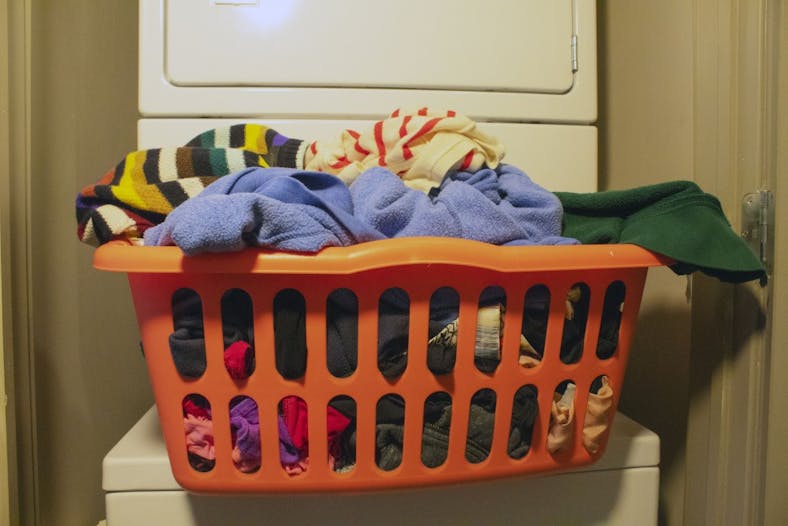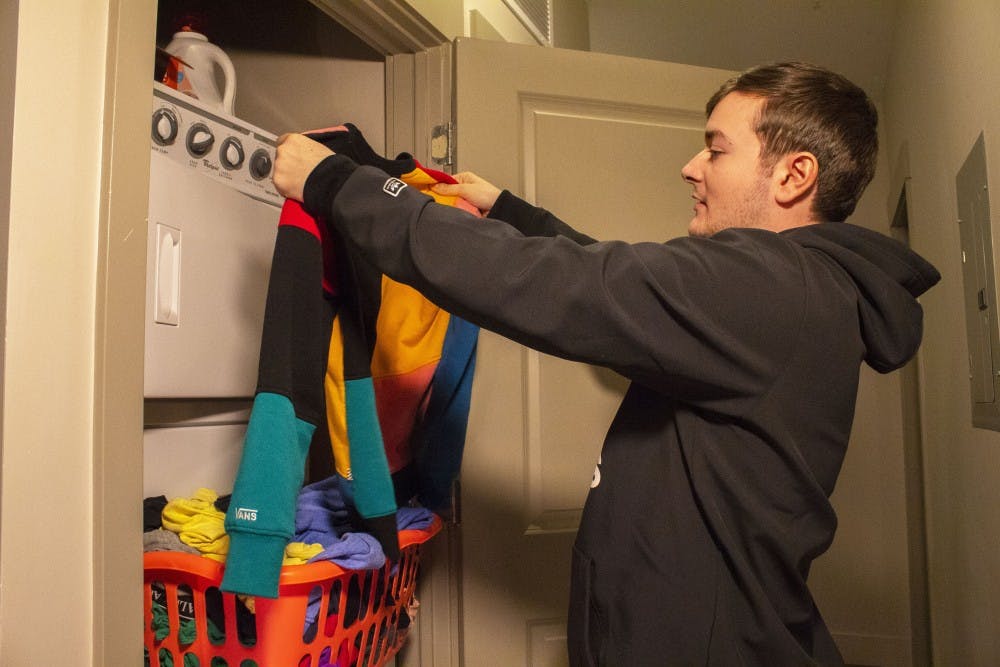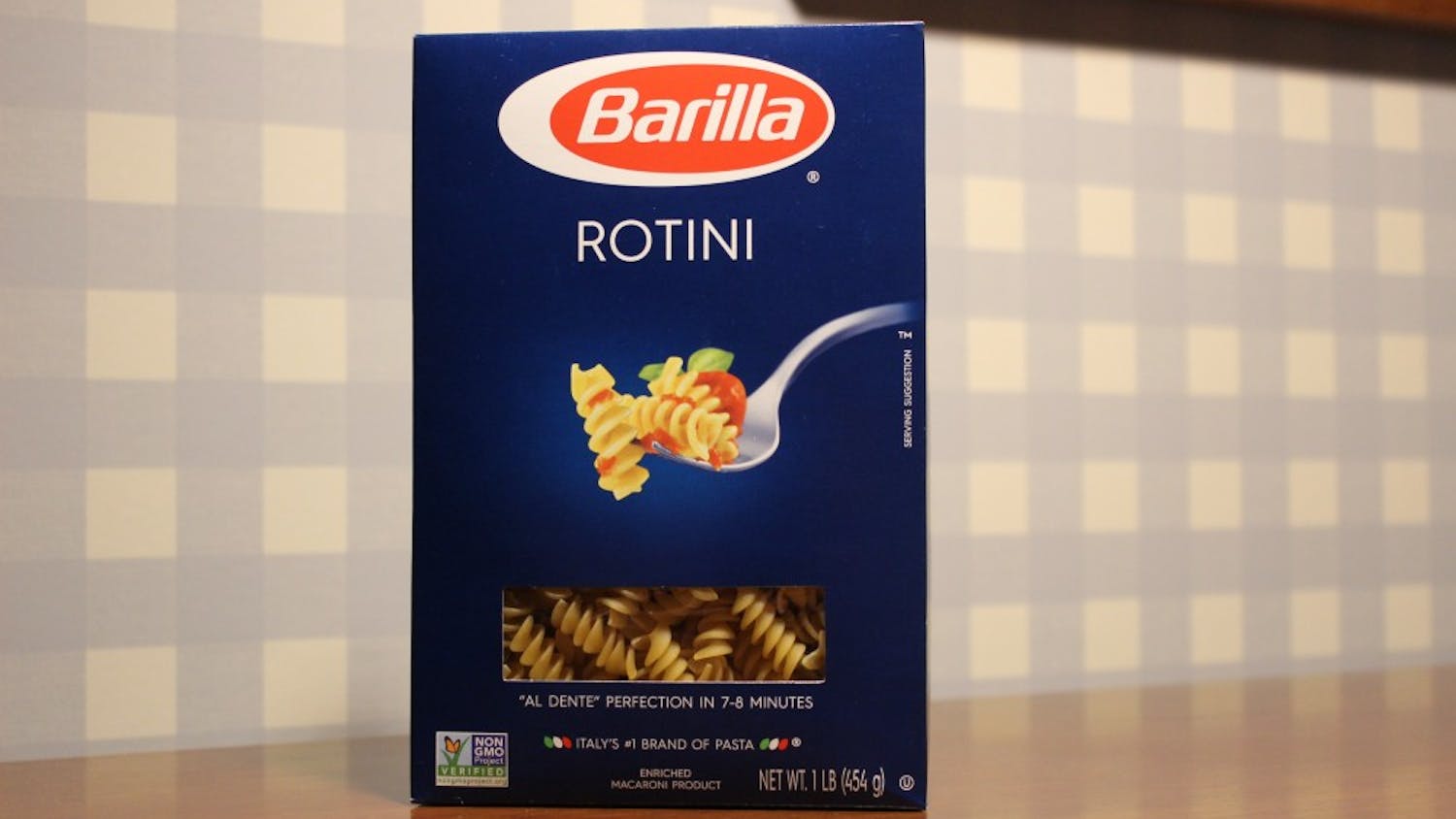Congratulations, you washed your first load of laundry. Right as you pull the load out, you notice a suspicious looking pair of underwear, one that went from a sparkling white to a light pink.
The hard and fast rules of laundry are never mix whites and colors, along with never run fancy clothes with rough materials. However, the rules can be bent, and many students completely break those rules.
Running a typical load
First, separate your loads by feel of material and color. Most things can run together, such as socks, shirts and pants. Most people’s regular loads take up about half of the washing machine, though some people swear by throwing as many clothes as possible into the washer and using the most detergent possible. Generally, a smaller load is the safer route to ensure every article of clothing is properly cleaned.
Typically, the temperature a person should use is either cold or warm. Cold is more often used for colors and clothes with stains. It also uses less energy and is more eco-friendly, according to wash.com, a website focused on how to do laundry.
Thespruce.com, a website containing posts about home improvement and cleaning, states warm water can be used on more delicate fabrics, such as sweaters and blouses. Be warned, however, warm to hot water can make colors fade faster or shrink your clothes. One reason to use hot water over cold is sanitization. If someone is sick and contagious, or you’re watching your baby cousin for the weekend and laundering reusable diapers, hot water is a better bet for those scenarios.
Next, into the dryer your clothes go. Make sure to shake out every item of clothing as you take it out of the washer, just to ward off extreme wrinkling. Most clothes can be ran on a normal dryer cycle. However, materials such as bras and dress clothes should run on a delicate cycle.

Special washing machine scenarios
If a person is washing delicate clothing like underwear, mesh guard bags are a safe bet for storing them while in the wash. This is to prevent the clasps or zippers catching on anything. Clothing such as formal blouses or dress pants also typically merit their own load.
If you ever happen to forget your clothes in the washer for hours on end, just run the load again with a little bit of detergent and some vinegar, according to aslobcomesclean.com, one woman's blog about how she cleans her home. The smell will disappear and you can throw the clothes into the dryer when the load is done.
Stains and other messes
It’s happened many a time, where someone is reaching for the last bit of queso for their nachos, and lo and behold, they dump the cheese all over their favorite T-shirt. Don’t worry, many stains are easy to get out, assuming you can get to them fast enough.
If possible, take the item of clothing off and run it under cold water. As the water washes over the stain, try to gently dab out as much of it as you can. If it’s a liquid stain, run it under the faucet until the water runs clear.
Assuming the stain doesn’t come out, the next step is a stain remover. According to artofmanliness.com, a website dedicated to manly improvement, for cotton clothing a general stain removal liquid or stain stick can take care of the problem. Typically, stains on synthetic materials such as polyester and nylon can be remedied using normal laundry detergent and tap water.
If all else fails, and you’re running late to that class presentation you have in two hours, throw everything in the washer and subsequently the dryer on the lowest possible temperature setting and cross your fingers.






